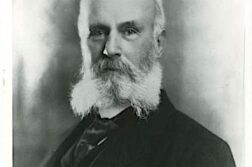 Keith Vaughan
Keith Vaughan
by Philip Vann and Gerard Hastings
Lund Humphries. 184 pages, $80.
 Keith Vaughan: The Mature Oils 1946-1977:
Keith Vaughan: The Mature Oils 1946-1977:
A Commentary and Catalogue Raisonne
by Anthony Hepworth and Ian Massey
Redcliffe Press Ltd. 208 pages, £40.
IN ONE of his last journal entries, the British painter Keith Vaughan wrote: “Another day nearer the end. Slept rather better during the day. Had several de- lightful dreams lately that I was working again and producing paintings which pleased me. Felt marvelous at the time. Alas only a dream.” Vaughan is known as much for his journals as for his paintings. The journals span nearly four decades from his experiences of World War II, to his successful career in the 1950s and 1960s, through to his bouts with colon cancer and ultimately suicide in 1977. Since their publication in the early 1990s, these journals, with their precise and lyrical details of activities and emotions, have be- come another way of making sense of his creative and sexual life.
Take his description after watching a soccer game: “legs and things of footballers. Watched this evening trying to dis- cover whether a padded crotch covered their genitals. Like to see them play naked—or better to strip naked after the match and stand still. Examine them minutely. Such stamina, skill and vital charm.”

His descriptions of landscapes were equally engaging. In describing the landscape of southern Spain seen from his first airplane ride, he crafted a mixture of observation and sensa- tion: “a basking ochre panorama of incredible subtlety and de- tail, everything conforming beautifully to the geological formations. No trees. Rather pleasant the bumping sensation when going through turbulent passages of air because it gave the feeling, if one didn’t look out, that there was something solid underneath.” These journal entries point to two aesthetic obsessions in Vaughan’s work throughout his life: the impor- tance of male figures and the patchwork solidity of his land- scapes.







